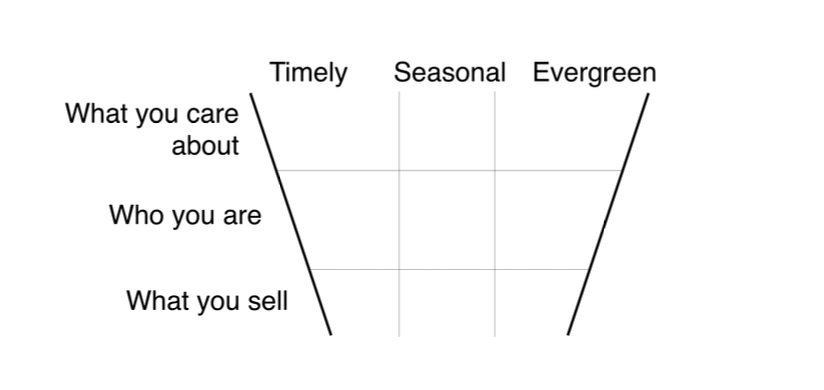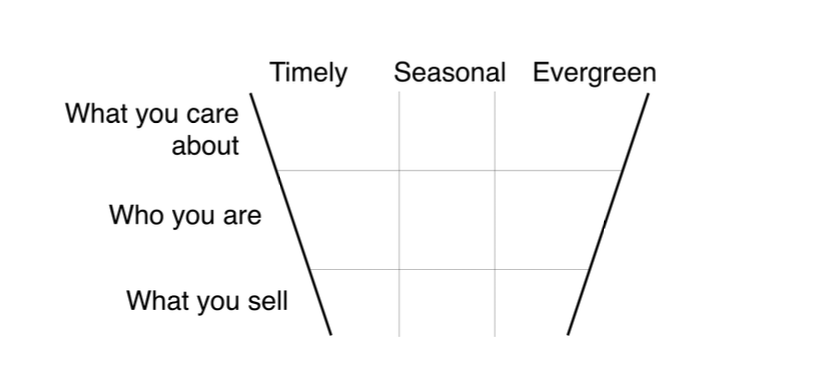When you first meet someone, your conversations tend to focus on what you have in common like shared interests and values. This is why so many people make small talk about the weather. You probably won’t share intimate details about the people in your life. But after you meet, you might start sharing some of those things, especially if the first date goes well. In the beginning of a relationship, you should tell stories about shared interests and values. As things progress, you can tell stories about the people in your life (like your customers or employees). The idea is to divide your stories into three more categories: timely stories dealing with current events, seasonal stories relevant because of the time of year, and evergreen stories that are valuable no matter when the audience encounters them. Sometimes Amex OPEN Forum spots something relevant that happens in the news and writes stories about how it affects small business owners, like new overtime laws and tax policies. These are timely + top-funnel stories. The stories are often timely—as the company reports on new innovations—but also evergreen because they still entertain after the news is over.
Tell someone to write a poem, and chances are they’ll freeze up. Tell someone to write a haiku, however, and we bet they’ll bang one out in less than 10 minutes. The reason: Constraints unleash our creativity. But how can you translate that to the complex world of content marketing? The diagram below will help you do just that.
The Story Funnel-Matrix
The funnel-matrix has two dimensions. The first maps loosely to the stages of a typical marketing funnel: awareness, consideration, and acquisition.

What stories you tell depends on your current relationship with your audience—where you are as a couple, to use the obligatory marketing-dating analogy.
When you first meet someone, your conversations tend to focus on what you have in common like shared interests and values. This is why so many people make small talk about the weather. It affects everyone, so it’s something we all have in common.
You probably won’t dive into your health problems the first time you meet someone. You probably won’t share intimate details about the people in your life.
But after you meet, you might start sharing some of those things, especially if the first date goes well. You might paint a picture of your dream life: where you want to live, your ideal career, where you want to travel. Though you shouldn’t hit them with a marriage proposal at this point, you’ll start to develop a deeper connection by explaining what you care about and what you want.
By the third or fourth date, you’ll gradually introduce more personal stories over time. This is the way a relationship progresses. (Notice how storytelling is such a big part of what we do when we’re dating. It’s good for more than just marketing and publishing!)
This brings us back to our funnel-matrix. In the beginning of a relationship, you should tell stories about shared interests and values. As things progress, you can tell stories about the people in your life (like your customers or employees). Finally, as things start getting more serious, you talk about your products and services.
The second dimension of the funnel-matrix adds a bit of planning to aid your content strategy. This comes straight from the playbook newsrooms have used for decades. The idea is to divide your stories into three more categories: timely stories dealing with current events, seasonal stories…

COMMENTS